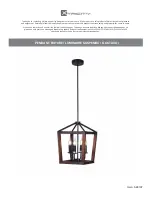
2-8
9. Set the Cut mode selector to PURE for cutting
with minimum hemostasis, BLEND 1 for moder-
ate cutting hemostasis or BLEND 2 for heavy
hemostasis. The mode is changed by depressing
and releasing the Cut MODE pushbutton. The
selected mode is indicated by illumination of the
associated indicator.
10. On units with the Bipolar option select the
desired Coag mode using the Bipolar mode push-
button.
11. Adjust the Cut and Coag power controls to
the desired settings. If unsure of the proper set-
tings, start the controls at zero or a low value
such as 25 for Cut, 30 for Coag and 15 for
Bipolar. Note that sections for each mode are
independent.
2.5.2 Operation
Activate the electrosurgical unit in the desired
operating mode by depressing the appropriate
treadle of the foot switch or switch of a hand
controlled accessory. On units equipped with the
Bipolar option, the coag foot switch will control
output to the Bipolar jacks in Bipolar Coag
mode, and Monopolar Cut only will remain avail-
able at either of the Monopolar active jacks.
Adjust the corresponding power level control
until the desired results are obtained. The avail-
able power in watts will be displayed in the win-
dow above each power control knob. Noting this
wattage may be useful in attempting to derive
similar surgical effects from units of different
manufacturers.
Surgical effects are dependent upon a number of
factors including waveform, electrode size, elec-
trode geometry, power level and surgical tech-
nique.
The waveform is determined by the mode activat-
ed by the user and the Cut Mode selection.
Cutting waveforms are generally continuous
(PURE) or have moderate crest factors
(BLEND). Coagulation waveforms generally
have high crest factors. In general, the higher the
crest factor the less tendency a waveform will
have to cut and the greater its tendency to coagu-
late. The lowest crest factor waveform, Pure Cut,
will induce minimal thermal damage in biopsy
samples.
Monopolar active electrode size and geometry are
significant in that a large electrode lacking sharp
features, e.g., a ball electrode, will have no ten-
dency to cut, independent of the waveform or
power level. On the other hand, a small geome-
try, sharp electrode, such as a needle or wire loop,
will have significant propensity to cut simply
from mechanical pressure. Therefore, when coag-
ulating with small geometry electrodes, it is advis-
able to use only coagulation waveforms, use little
if any mechanical pressure, and operate with
lower power levels.
The Bipolar waveform is essentially identical to
that for coagulation, but is delivered at a much
lower voltage and is capable of delivering higher
current than Monopolar Coag. Bipolar hemostasis
is more localized than that in Monopolar, since
only the tissue grasped between the forceps tips is
affected. This is particularly desirable in vascular
and small appendage surgery, where Monopolar
current may concentrate in the proximal vessels
resulting in undesired electrosurgical effects in tis-
sue remote from the point of application. This
easily controlled localization is also of benefit in
plastic and neurosurgery.
The power may be adjusted while activated to a
maximum of + 5 Watts or + 25% of the power
setting prior to activation, whichever is greater,
for all modes.
2.6 USER MAINTENANCE
2.6.1 General Maintenance Information
This section contains information for ordinary
upkeep of the Sabre 180. While the unit has been
designed and manufactured to high industry stan-
dards, it is recommended that periodic inspection
and performance testing be performed by a
qualified biomedical technician to ensure contin-
ued safe and effective operation.
Ease of maintenance was a primary consideration
in the design of the Sabre 180. Maintenance fea-
tures of this unit include built-in fault detection
and trouble-shooting aids, circuit simplicity, cir-
cuit protection, use of common parts,easy access,
no adjustments and computer aided calibration.
These features coupled with the warranty, local
support, loaner equipment, factory support, toll
Summary of Contents for sabre 180
Page 1: ...Service Manual...
Page 6: ...This page intentionally left blank...
















































